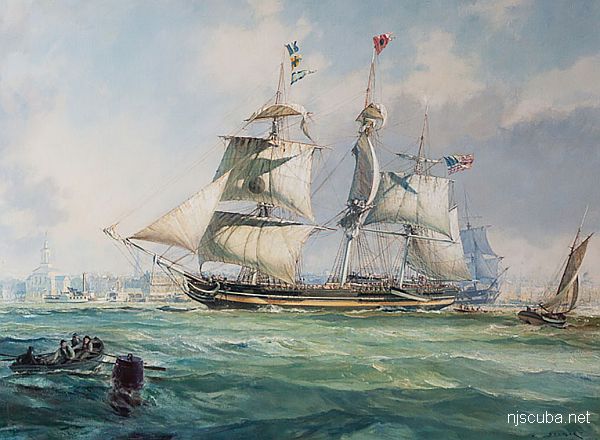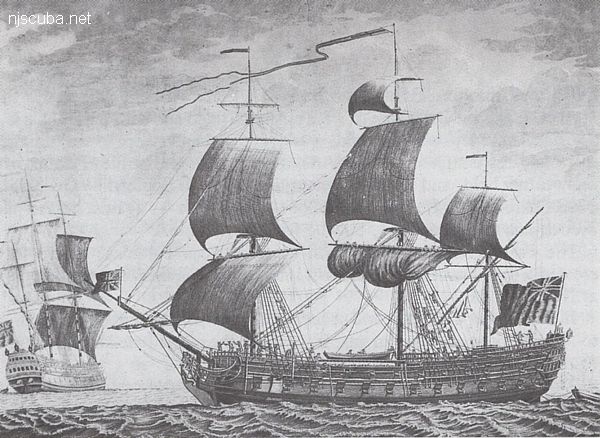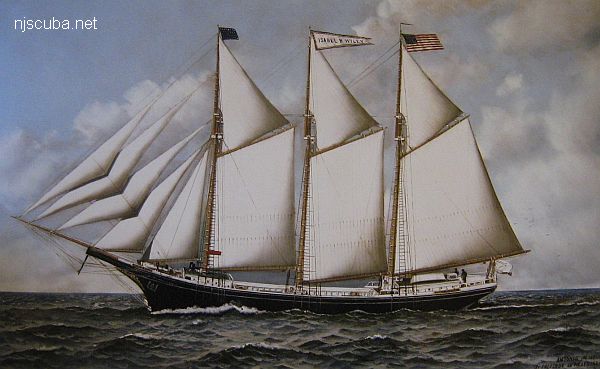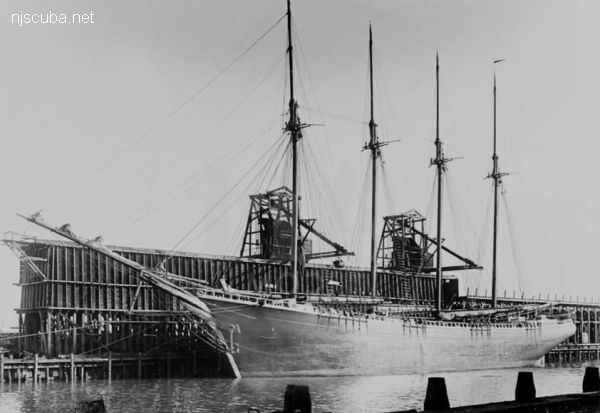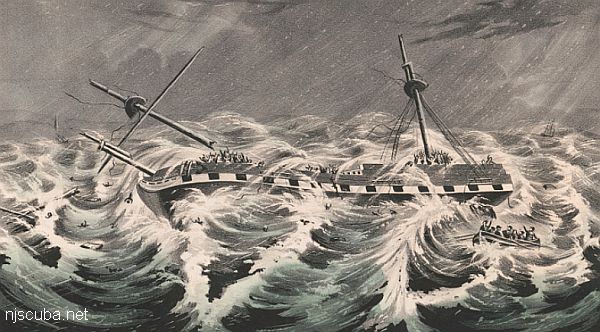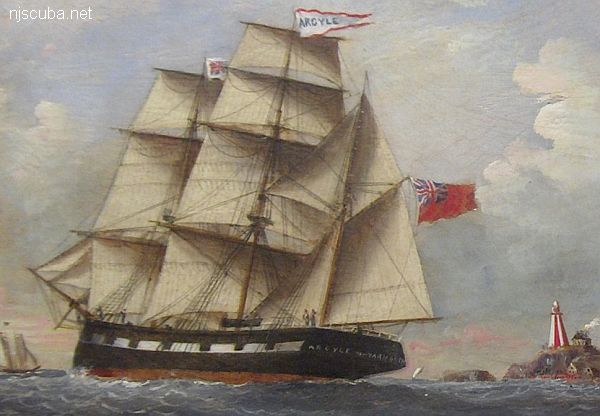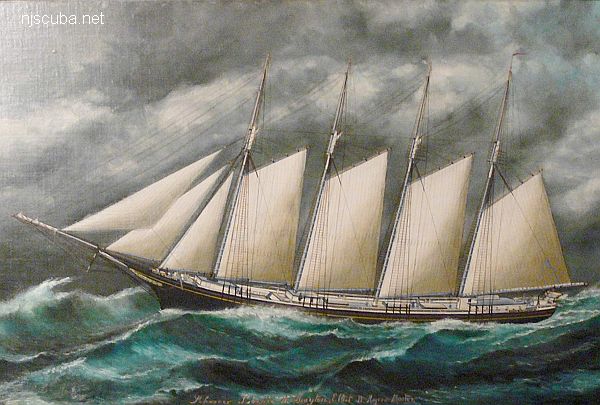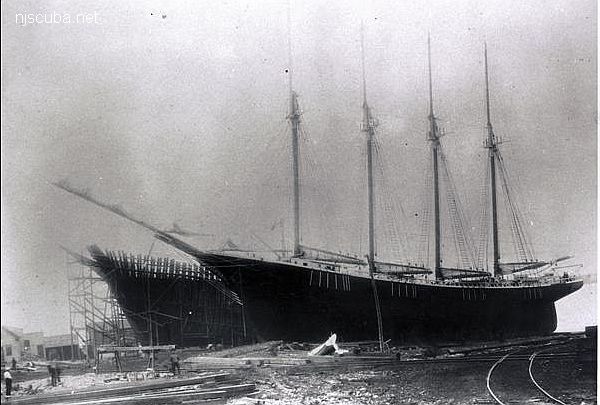- Type:
- shipwreck, sailing ship
- Specs:
- 965 tons
- Sunk:
- Wednesday February 17, 1943
possibly collision with barge F.F. Clain - Depth:
- 80 ft
The Harry Rush is described as a freighter by Krotee, not always the most reliable source. The wreck commonly known as the Harry Rush is a sailing ship. The wreck is the typical three parallel wooden walls, very low-lying, with some steam machinery and chain pile at the west end. The orientation of the wreck is unusual, as if it sank while running for the shore, rather than riding out a storm. The absence of towing bits makes it likely this was a true sailing ship rather than a schooner barge.
More: Harry Rush ...

